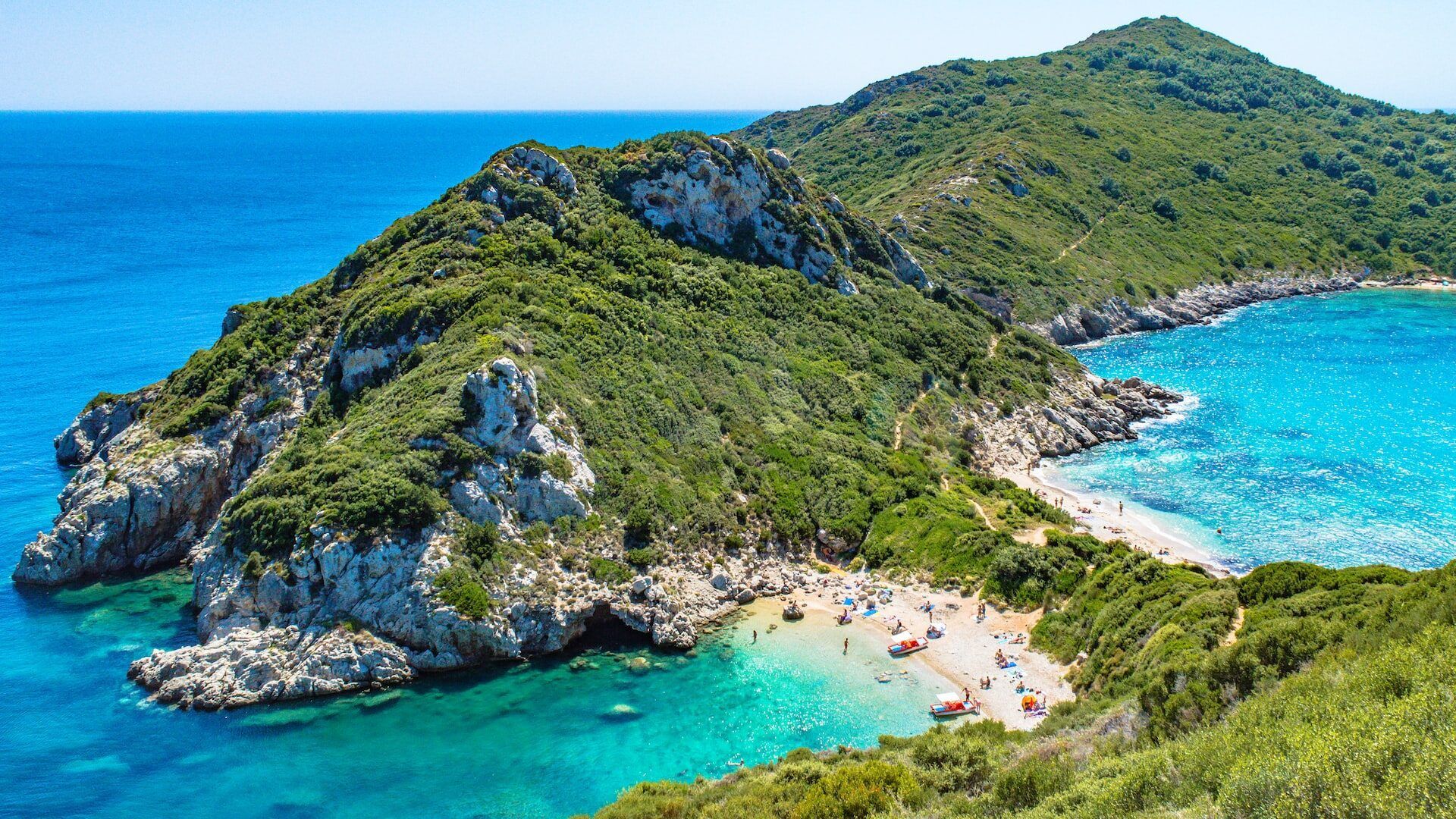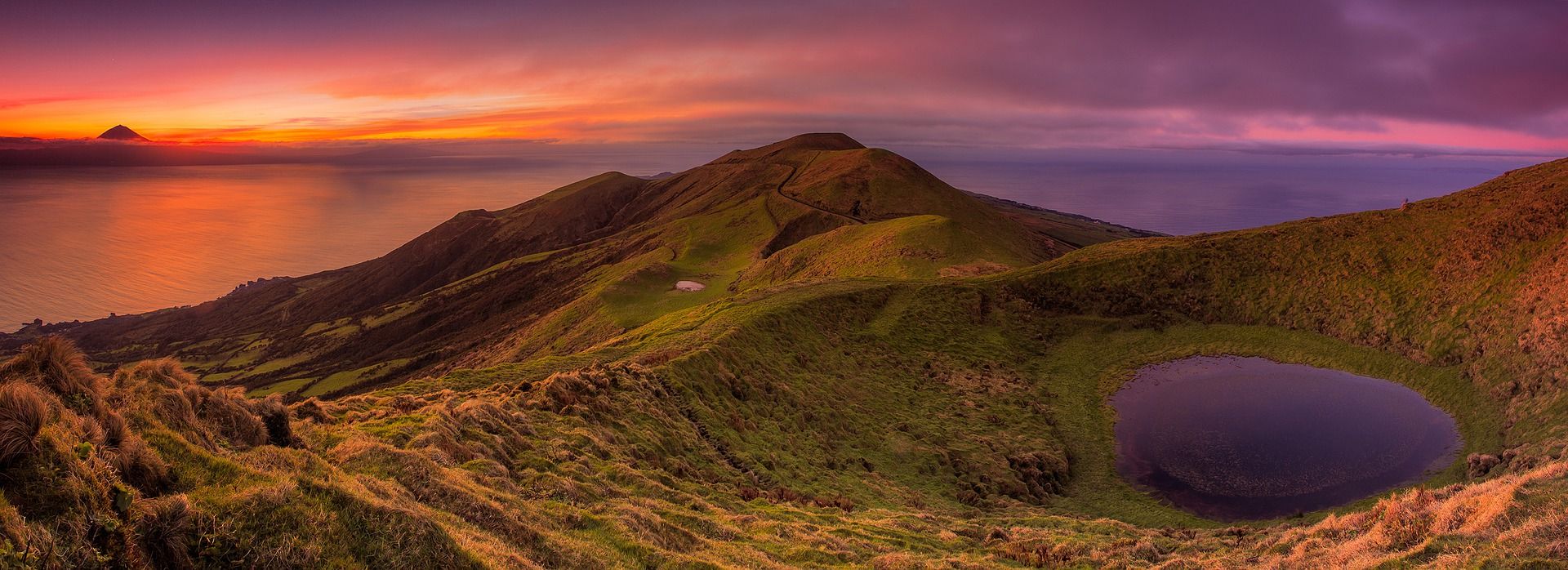

It is habitually called European Hawaii and it is not difficult to comprehend why; kilometres of lush vegetation, waterfalls and volcanoes. So, what should you see in the Azores Islands? Discover the wonders that you can find in this archipelago at the limits of Europe.
If you are considering travelling to the Azores, then you are certainly unperturbed by long journeys or isolated places. In the Azores, your lone-wolf character gets a run for its money. In short, you might have already gathered that this archipelago is not exactly just around the corner; the Azores are 1,800 km from Portugal and 2,600 km from Canada. Although these nine islands are located bang in the middle of the Atlantic Ocean, they are part of Europe for all intents and purposes, being Portuguese islands.
The activities in the Azores are perfect for nature lovers. You can experience hiking with one-of-a-kind views, challenge torrents in canoes and enjoy the spectacle of waterfalls and natural spas. Have you ever wandered around inside a volcano’s crater? If you’ve never done it before, there’s a very simple way to catch up: take a break from studying or working and follow our tips on the seven best places to visit in the Azores.
The Spa of Furnas on the island of São Miguel
Starting at the island of São Miguel, the largest of the entire archipelago and typically also the starting point for all sightseeing. Here, there is Ponta Delgada and thanks to its port, one of the archipelago’s main cities. Its appearance is cosmopolitan: churches, convents and historic buildings are an example of a simple fishing village’s metamorphosis into a dynamic and tourist city, where past and present blend perfectly.
The island of São Miguel is also famous thanks to Furnas, a town that is home to spectacular natural spas. Here the water flows directly from the volcanic rocks and thus offers thermal springs: a proper outdoor wellness centre! Just what you need to relax after a fantastic hike around a volcano’s crater. By now you will have inferred that near Lagoa do Fogo on the island of São Miguel, you can walk right into the crater of the Caldeira Velha volcano and enjoy the landscape on the ocean. And why not pause later to take a dip in the natural pools that you find along the way? This island offers wonders everywhere: you just have to pick which ones to visit.
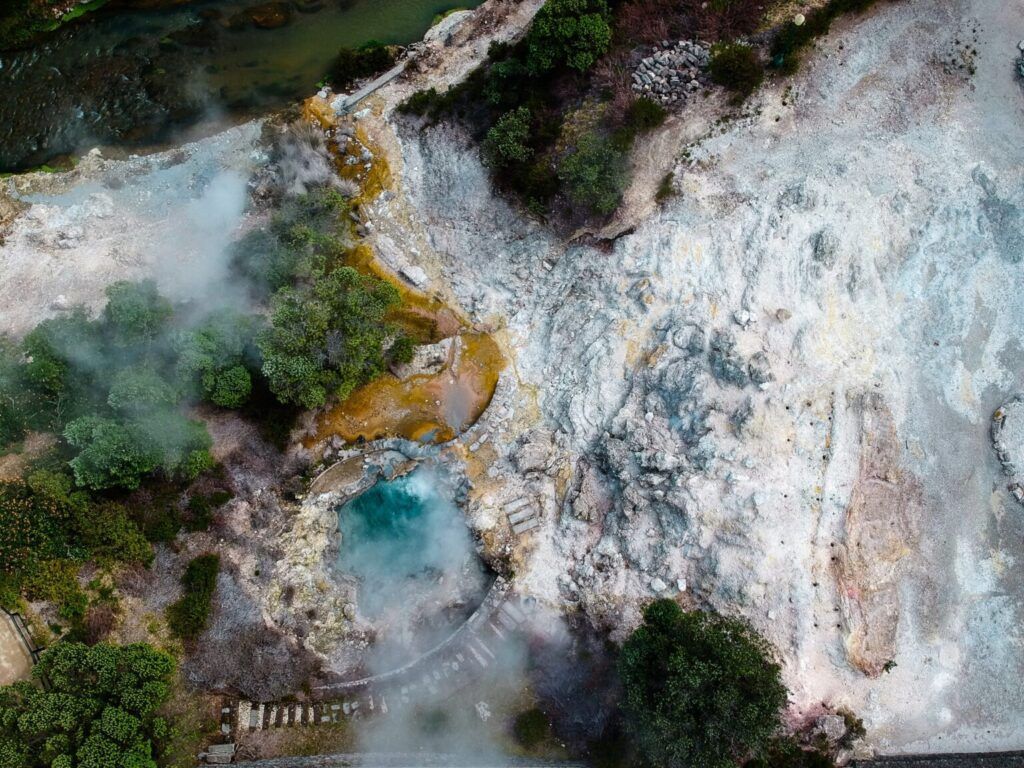
Horta and Capelinhos: Faial Island
Faial Island is part of the archipelago’s central group of islands, together with São Jorge and Pico. The main city on the island is Horta. Built on a hill, its streets and narrow alleys flow to the sea and its port. Horta is a town with an international spirit, which has always welcomed travellers and sailors from all over the world.
From the highest point of the island, Cabeço Gordo, you can admire the blue of the sea and much more: Faial is called “the blue island”, also given the numerous hydrangeas that bloom on the meadows, descending gently to the coast. To the west of the island stands the majestic volcano of Capelinhos. This is where the last volcanic eruption of the Azores took place and the landscape is obviously lunar-like, although nature is quickly restoring its green colour to the meadows. You’ll feel like you’ve landed on a different planet! Among the best places to visit in the Azores, you cannot miss the view from the Capelinhos lighthouse: after a spiral staircase of 140 steps, the view will leave you speechless!
Lastly, you cannot leave the island of Faial without having visited one of its most characteristic bars: the Peter Cafè. It is located in the harbour area, a charming eatery and is pleasant for evening walks. It perfectly encapsulates the islanders’ hospitable character. In the past, this pub was a meeting point for sailors and seafarers and, although it is a mostly tourist place today, it retains the same atmosphere. Try the famous Gin do Mar and enjoy the relaxation after your long hikes.
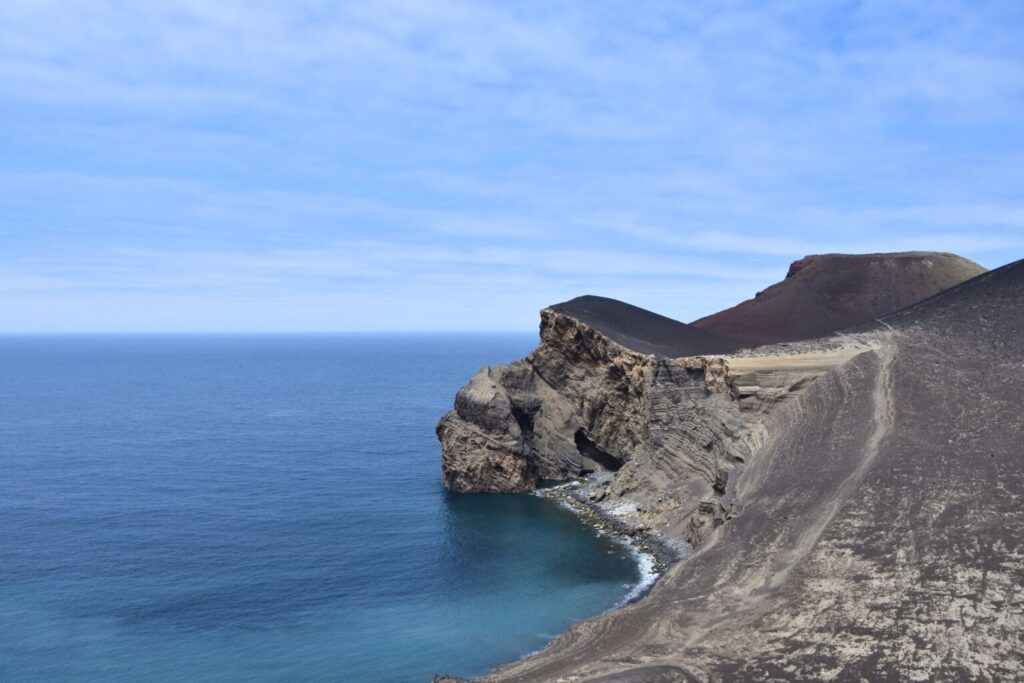
The Island of Terceira: from Angra do Eroísmo to the volcanic fireplace Algar do Carvão
Remaining in the central group of the Azores archipelago to discover Terceira, which is the third island to have been discovered by navigators. The lustre of its past is well represented by its main city, Angra do Eroísmo; this town is the ancient capital of the Azores and is as lively as a true European capital. Declared a UNESCO World Heritage Site, Angra do Eroísmo represents a nice break between hikes. Cathedrals, castles, panoramic terraces, but above all the impérios. These are very colourful small temples, similar to chapels: everything about this city is a discovery!
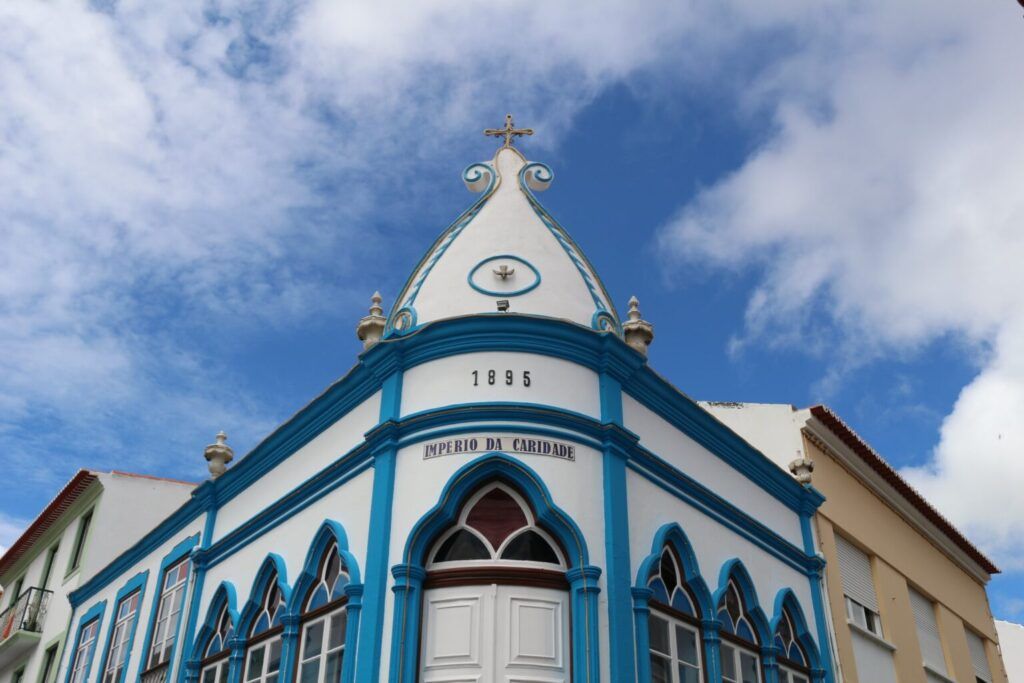
Visiting Algar do Carvão, we return to the wild nature of Terceira. It is a unique natural monument; a proper inactive volcanic chimney, where you can enjoy adventures. From the crater’s rim, you drop up to 100 metres in depth and walking around you are enchanted by the lush vegetation that grows on all sides. Not all of the route is walkable, but you can get to see a pond that formed at the crater’s base: a truly unimaginable scenario! Also here, among the numerous places to visit in the Azores, you can enter a “lava tube” of about 700 metres in length: the Grotto do Natal. It earned its name for the fact there is an altar where the Christmas mass is celebrated every year. WeRoad takes you there too!
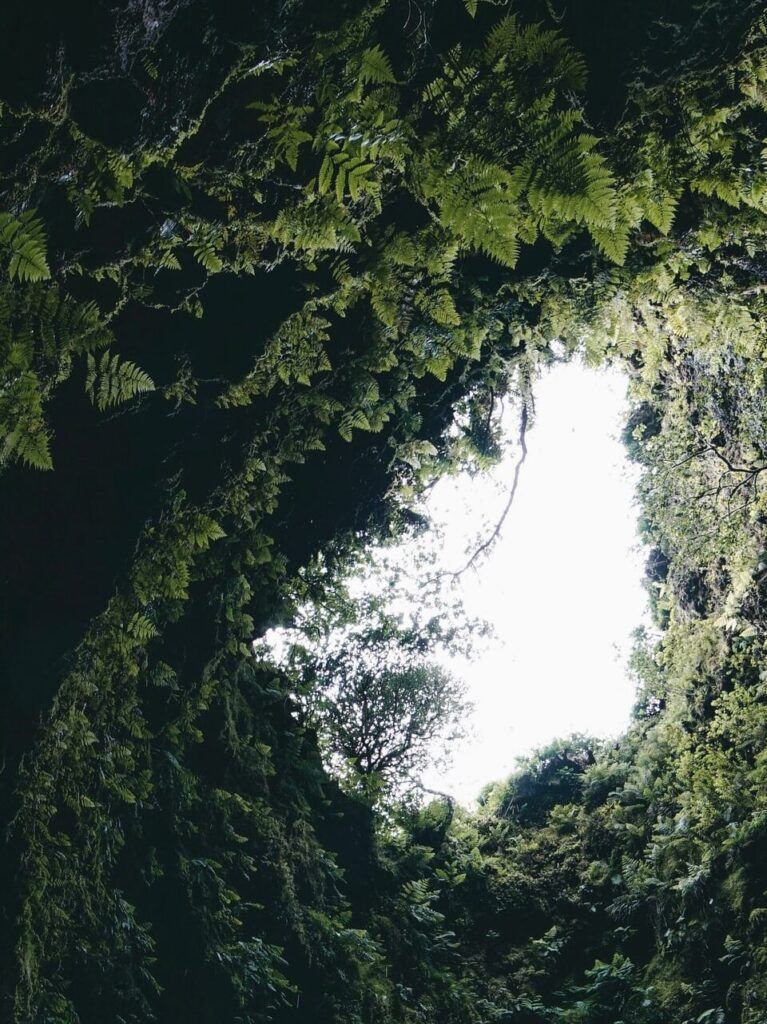
Relax and then visit Praia do Vitória, a pretty coastal town famous for its seafront and its typical food taverns. After all, Terceira is considered the archipelago’s most festive island and, among the things to do in the Azores, a nice party night must be on your list!
Whale watching on the island of Pico
Among the places to visit in the Azores, whale watching undoubtedly deserves a place on the podium. In general, all the archipelago islands are befitting for whale watching, as you can spectate almost a third of the world’s existing species here. However, the island of Pico is historically famous for these mammoth cetaceans: in the past, whaling was an active industry. Now the whales are protected and tourism allows their discrete sighting to avoid disturbing these magnificent animals. Just arm yourself with binoculars and wait for the right moment. Get your camera ready!
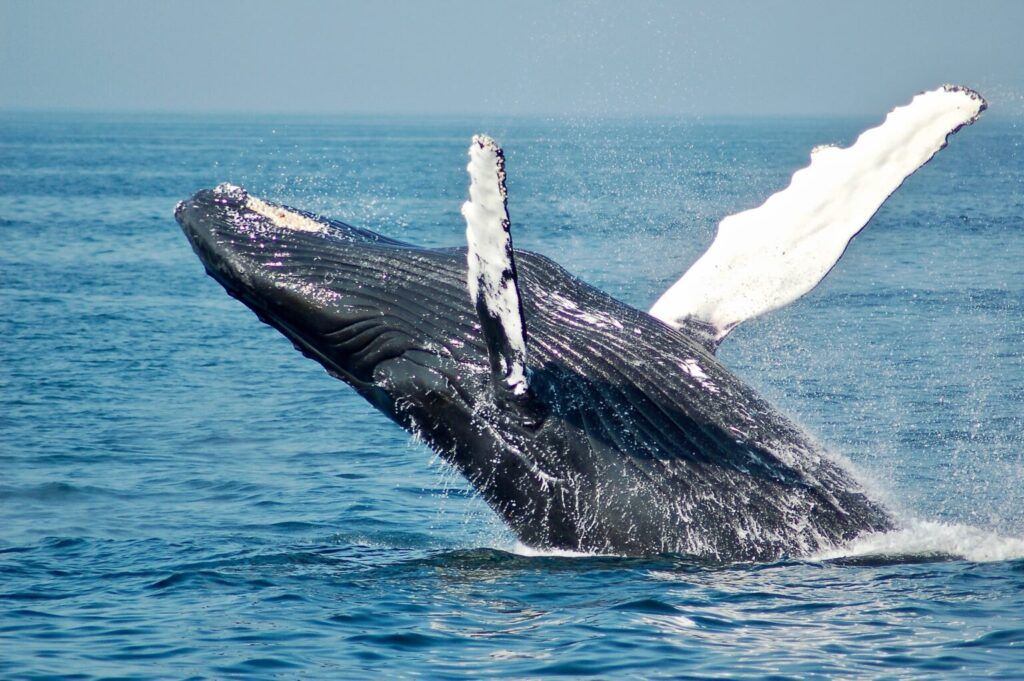
On this island, you can do one of the best hikes of the Azores. This is the route that will lead you to the highest peak of the archipelago: Mount Pico. A 4-to-6-hour hike will take you to 2,351 metres above sea level. Obviously, this route is not suitable for everyone, but it gives a unique spectacle.
The island of Pico is also famous for its vineyards, so special that they have been classified as a UNESCO World Heritage Site. The plants are protected from the sea wind by stone walls, creating what may seem like a labyrinth when seen from the distance. The particular climate and volcanic terrain create a dry and fruity wine. We strongly suggest you try sampling some, once you reach the island.
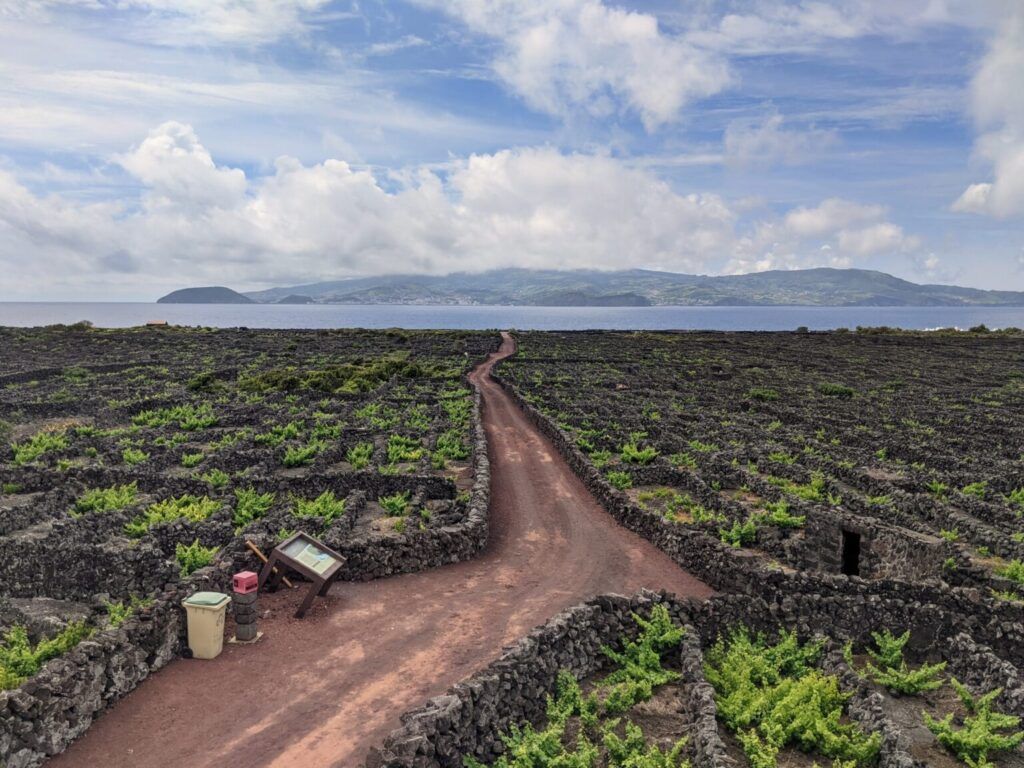
The most westerly islands in Europe: Flores and Corvo
Flores can also be called “the pink island”. Reaching the highest point, the Morro Alto, you can observe a lovely plateau covered with stunning azaleas, whose colour gives the nickname to the island. From this position, you can also admire the exquisite vegetation and the Flores’ numerous streams and waterfalls. In fact, canyoning is one of the most particular activities to do on this island.
On the island, you can also visit one of the most famous natural monuments of the Azores, undoubtedly one of the most original things to see, namely the Rocha dos Bordões: a set of large basalt columns, arranged to look like a giant pipe organ. Another experience to try is sailing the coast of Flores; given its diversity, in some points consisting of cliffs and in others of flat areas, the coastline allows navigation. Crossing a stretch of the sea you can reach the island of Corvo.
The smallest island of the nine and the only one to be a real island volcano: this is what awaits you in Corvo. With its 500 sparse inhabitants, the island is the least populated, but not for this reason the least attractive. The “grey” island corresponds in its entirety to a volcanic building and this made it initially unattractive to explorers, remaining intact in its uniqueness. The island’s rhythms are marked by agriculture, which is practised despite the rugged and steep coasts. The main attraction is its volcano’s crater, the Calderão: this is also among the places to absolutely visit in the Azores.
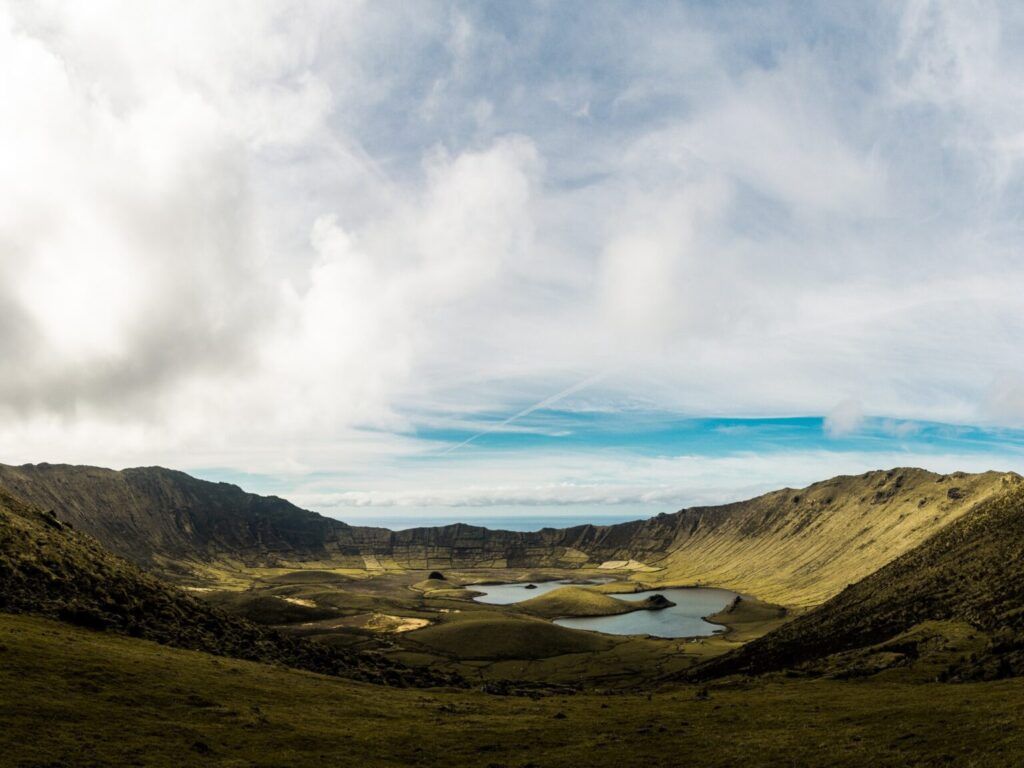
São Jorge Island
Be amazed by the longest island in the archipelago. São Jorge stretches for 60 kilometres and is located in the centre of the Portuguese islands. As you will have understood by now, this island, like its sisters, is the perfect place for hiking enthusiasts. In this case, one of the most popular destinations is the Pico de Esperança; this is not a simple mountain, but a volcano, whose last eruption dates back to 1907. The route’s peculiarity, immersed in the typical lush green of the Azores, is the panorama.
Thanks to the island’s narrow and elongated shape, once you reach the top of the highest point of São Jorge, you can spectate the sea both on your left and right. Descending to the sea is not as simple as it seems from the top, because the island is characterised by steep cliffs. At the foot, you reach another surprise of nature: the fajas. These are very low coastal plains, which give a very sharp and scenic contrast against the cliff’s steepness. Definitely to be included in your list of places to visit in the Azores.
The island’s “extremes” are also one of the most fascinating things to see in São Jorge. Given the island’s elongated shape, you need to get around by car. Drive east and visit Topo, a famous place for its natural pools, and then head west to Punta do Rosais. From here, particularly suggestive thanks to its lighthouse, with the weather permitting you can see the island of Graciosa with the naked eye.
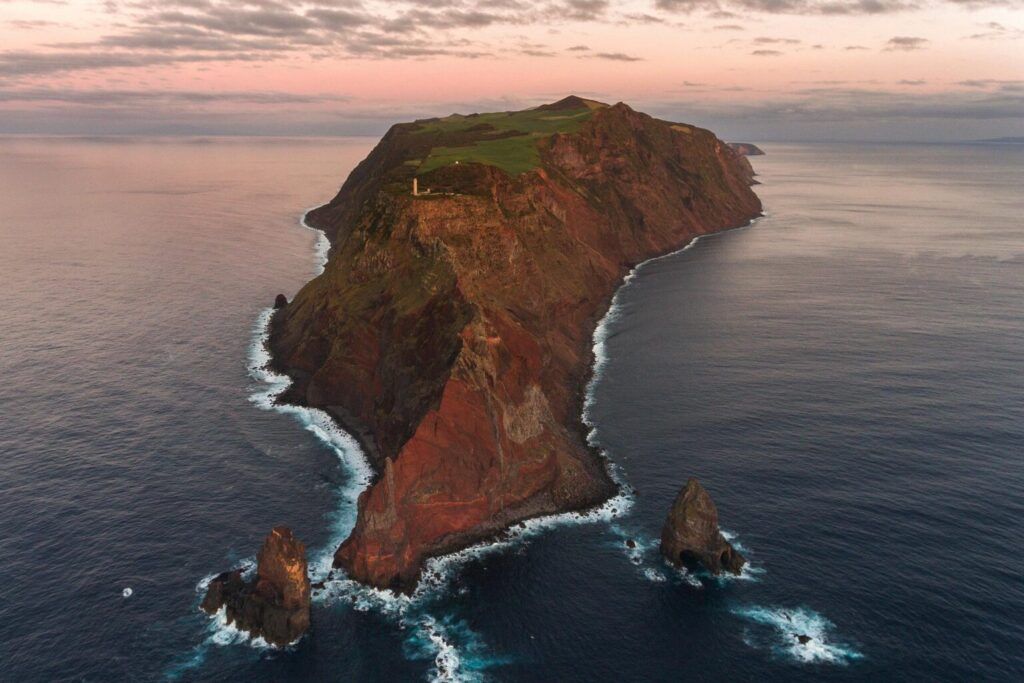
Graciosa: the white island of the Azores
What can you see in the Azores? How about visiting the UNESCO World Heritage Biosphere Reserve? That’s exactly right. Graciosa can flaunt this lustre, being among the most pristine and least touristy islands of the archipelago. This makes Graciosa even more exceptional; architecture respects nature without disrupting it and follows its rhythms. Mankind’s traces are exclusively limited to the numerous vineyards and splendid windmills.
Graciosa is called the “white” island because of the massive presence of volcanic rock. Throughout the ages, the rock has undergone alterations, leading to its assuming a whitish colour. Like any island in the Azores, you can make a charming hike from Graciosa to Caldeira, an elliptical-shaped depression that sits on top of the volcano. On the coast, the islet of Praia is a Special Protection Zone, and worth a visit as the Monteiro Storm Petrel flocks there, the only endemic seabird to the Azores.
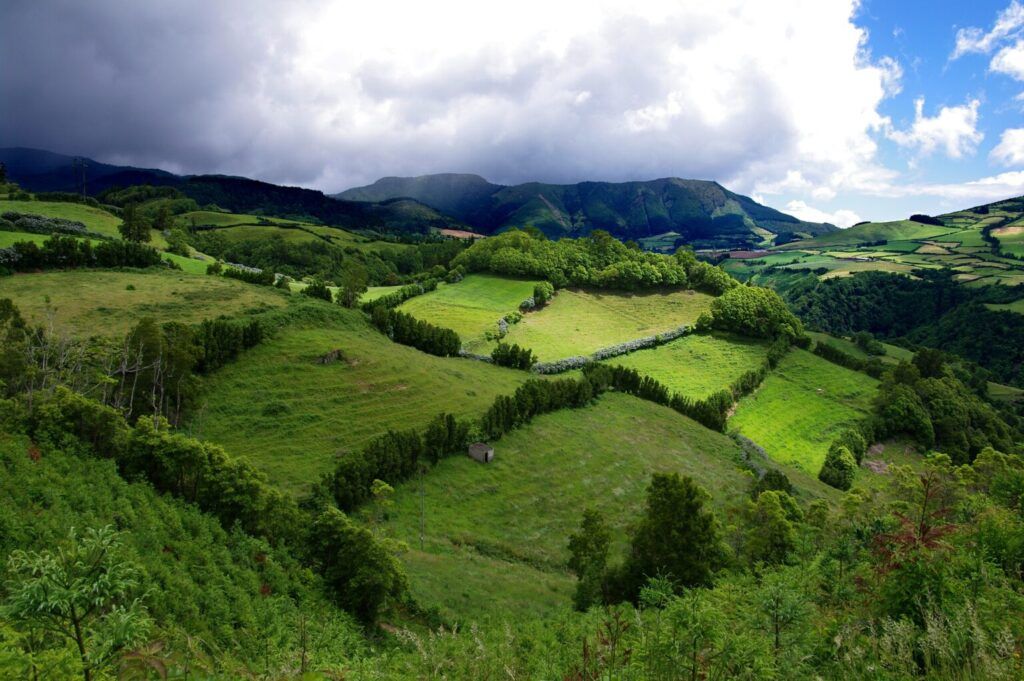
When should you visit the Azores
We have talked about the best places to visit in the Azores, but what about the best time to explore this beautiful archipelago?
In the Azores, you must always carry waterproofs and wear comfortable shoes. That’s right, these islands, so exposed to the elements of the sea and currents, have a rather rainy climate. However, this is also one of the archipelago’s most fascinating features, so choose the starting period based on the weather, but aware that rain is … unavoidable! We feel we should advise you against autumn and opt for June instead: nature will give you a luscious, flowery show, which rainfall will not ruin. The driest period, which still does not exclude the possibility of rain, is between July and mid-August, before the arrival of the hurricanes. During this period, you can enjoy an average temperature of 25 degrees; the Goldilocks range being neither hot nor cold, perfect for the countless hikes you aspire to do!
How to get around the Azores
Domestic flights
When it comes to getting around, you should consider that the distances between the various islands are fairly wide: for example, consider that the two islands furthest from each other are separated by 600 km. In some cases, a ferry suffices, while for other destinations you will need to resort to internal flights. We recommend that you plan your island hopping in advance, especially if you travel in the peak season. Flight schedules are fairly inflexible and booking in advance will allow you to better plan your travels and ensure a place on small aircraft.
Rental cars
To get from one point to another within a single island, you definitely need to rent a car. Although tourism to the Azores has increased in recent years, public transport still hasn’t caught up with this change. You can also choose to travel by bus (whose rides, however, are rather infrequent) but the flexibility that a car gives you will certainly be advantageous to your holiday. Once again, book your car before setting off: there are not that many available vehicles on the various islands.
Taxis
The choice of getting about by taxi could be really useful when hiking. By agreeing with the driver, you can be taken to the point where the walk starts, and then be picked up at the arrival place. Considering the long hours of walking, let’s say that in some cases a taxi could also be a lifesaver.
Discover all the other places to see in Portugal in our article!


